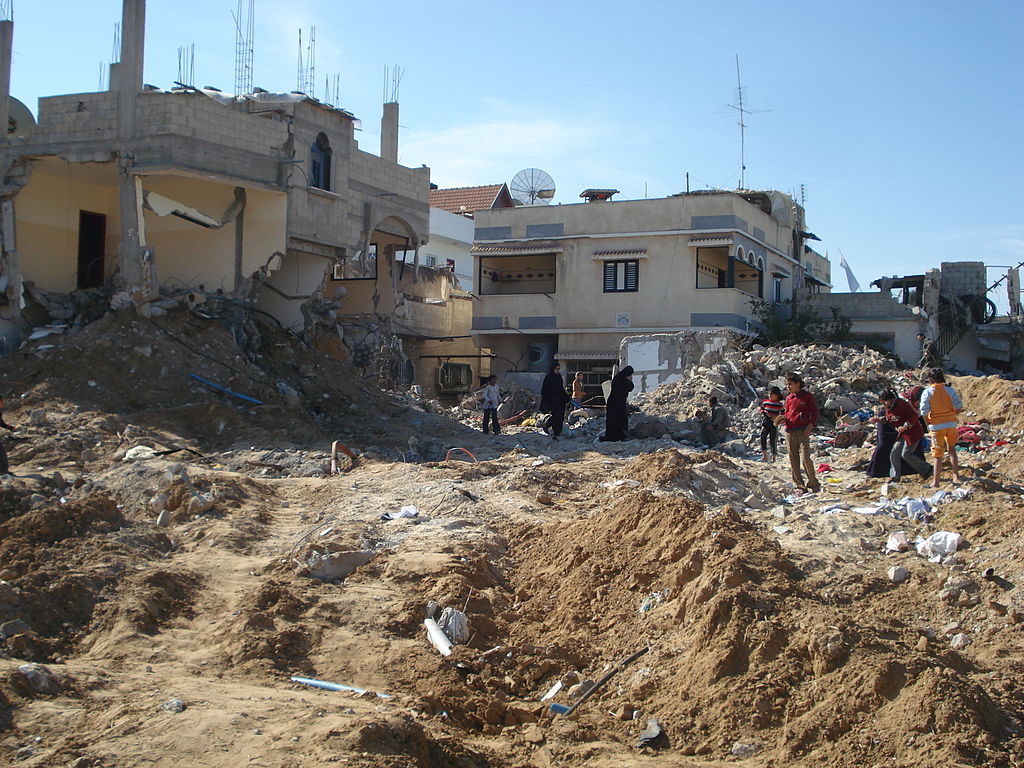Gaza Conflict Reaches Critical Phase As Humanitarian Crisis Looms
The conflict in Gaza has begun to take on a troubling complexion in recent days, as it has been revealed that more than one child has been killed per hour on average over a 72 hour period during this past week. To date, the official Palestinian death toll since this conflict began now stands at 718, but Valerie Amos, who is the Under-Secretary-General for Humanitarian Affairs says that the most distressing concern for her agency at this time has been the alarming incidences where children have been maimed or killed in the ongoing military operation.
Her agency, The Office for the Coordination of Humanitarian Affairs, has reported that the recent shelling has damaged six UN operated schools earlier this week where evacuees from bombed neighborhoods had been taking shelter. Schooling had been interrupted as a result of the fighting forcing people from their homes to seek safe harbor in these UN run educational institutions, which will soon enter its third week.
In the 77 schools that continue to care for and shelter homeless residents, food and water have begun to run short, as supply lines have been severed and markets have been shuttered due to the ongoing military operation. Gazans are limited in their options of where they can go, as 44% of the territory has been declared off-limits, compressing the civilian population in one of the most densely populated places on Earth into an even smaller area.
While the target of this operation by the IDF (Israeli Defense Force) have been the militants of Hamas, the sad reality is that the majority of victims in this campaign have been women and children.
An example of this tragic toll played itself out during an Israeli airstrike on Thursday morning, as a bombardment on the Jebaliya refugee camp killed six members of an extended family, including an 18 month old infant.
Charities and foreign diplomats have been calling for a ceasefire to allow badly needed medical supplies, food, water and aid workers into the territory to help those that desperately require assistance.
While Hamas opposes a formal ceasefire that doesn’t include the unsealing of its land and maritime borders, they are said to be amenable to a pause that would allow humanitarian aid into Gaza.
Since July 8, Hamas has used the Gaza Strip as a launching pad to fire more than 2,000 missiles into Israel, with thirty tunnels also being discovered by the military along its borders, passages that had been dug to alledgedly wage ground attacks within Israel by Hamas militants. Ever since, Israel has conducted an air campaign, and recently, a ground offensive to counter these threats, but as the past few days have shown, this defensive counterattack has not come about without the horrible reality of collateral damage.
Nonetheless, Prime Minster Benjamin Netanyahu has remained firm in his resolve, as he repeated his desired objective, “to return peace and quiet to Israel”. While time will tell whether he is successful in his endeavor, the civilians of Gaza have taken the brunt of the causalities in this conflict to date, a fact that hasn’t changed in the past week of fighting.




